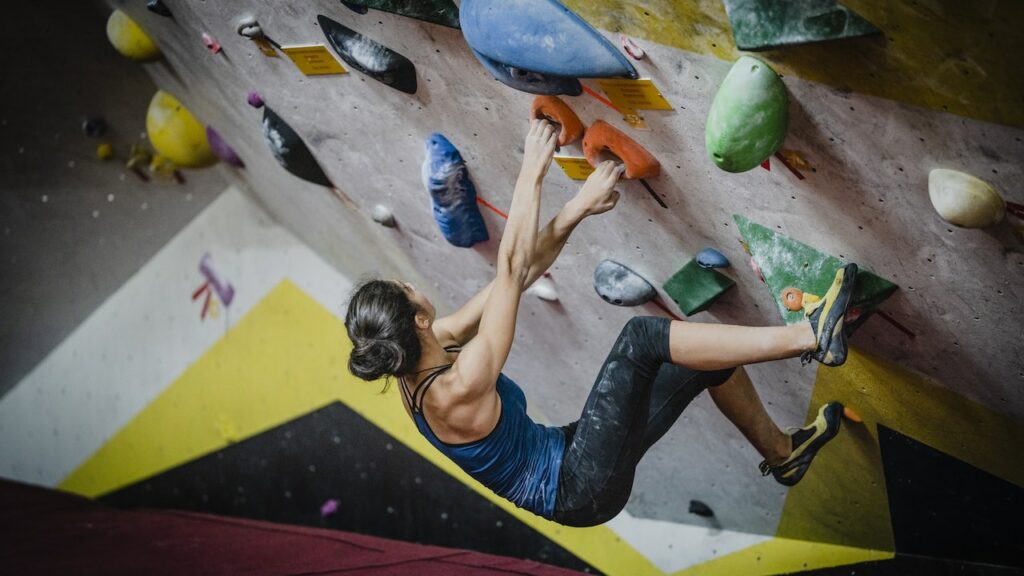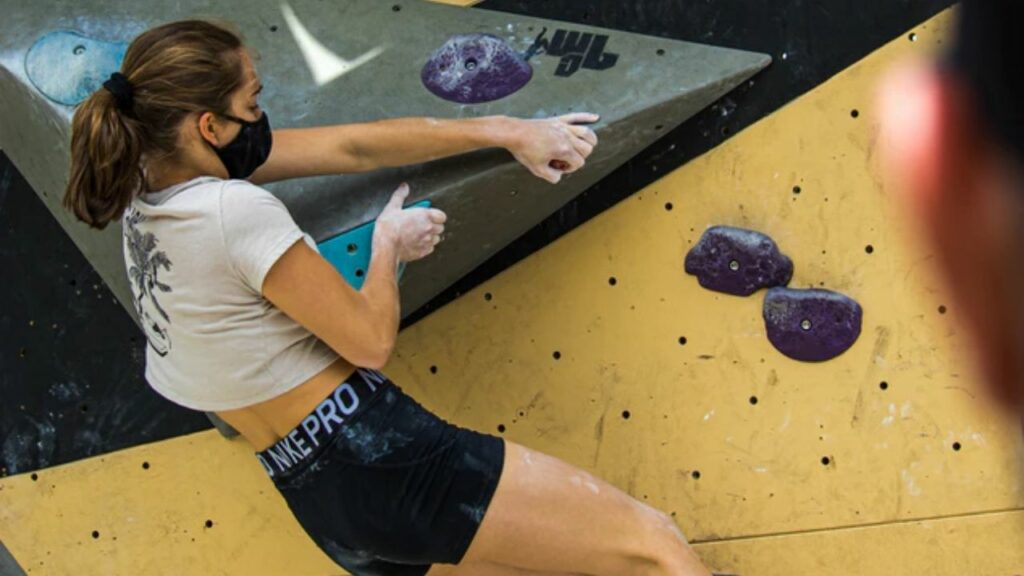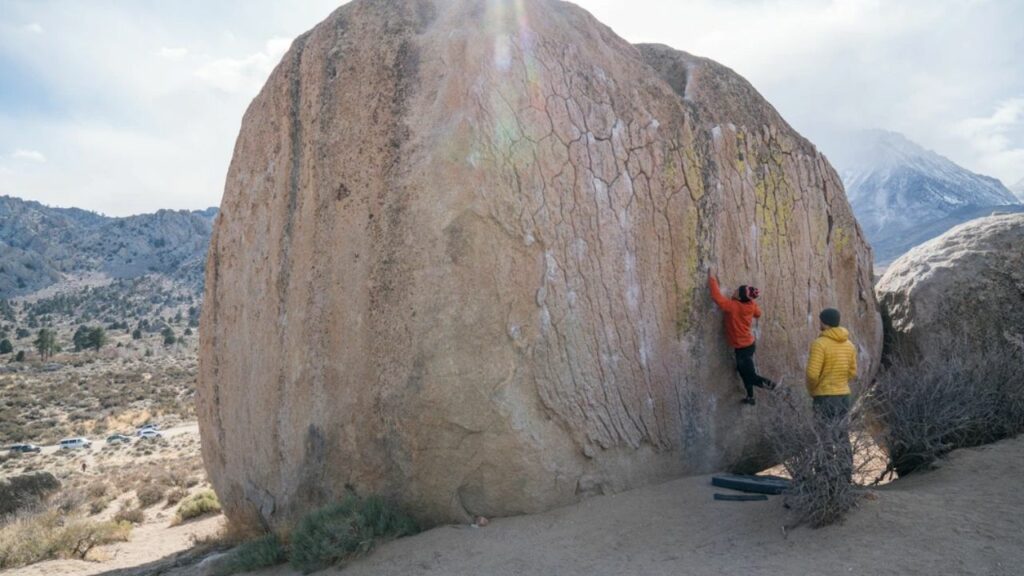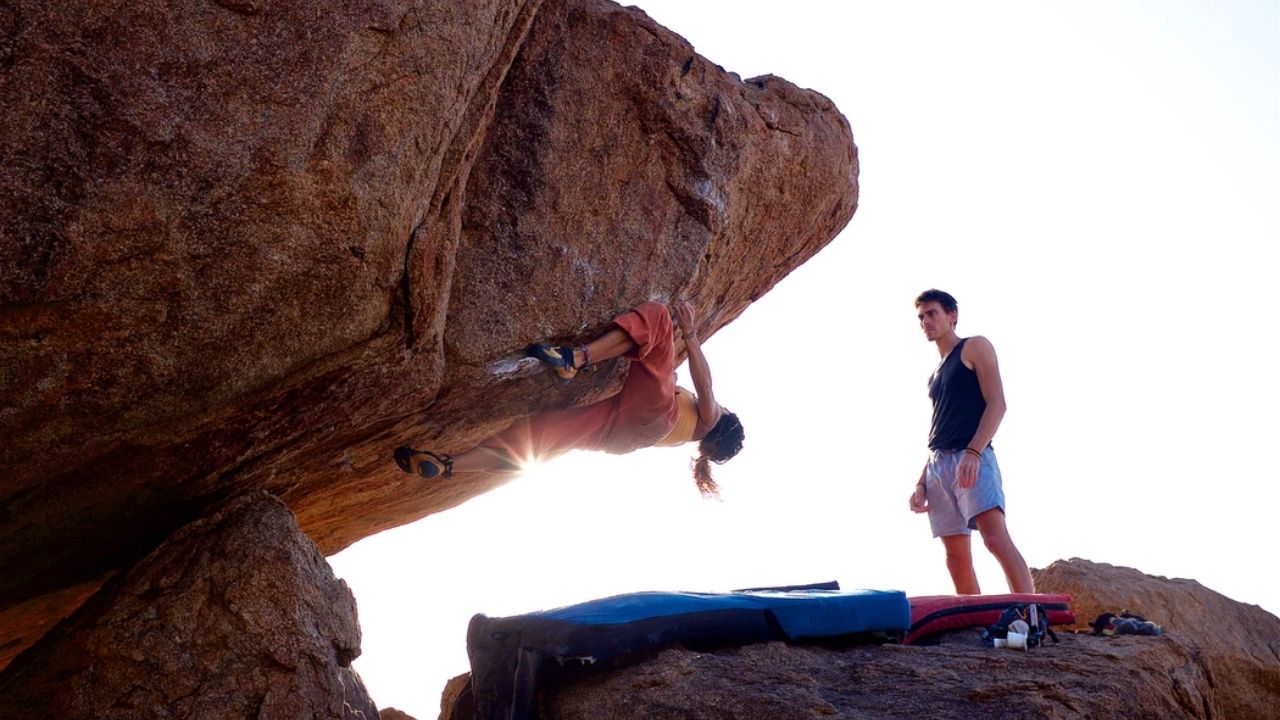Back in my newbie days, I, too, was once guilty of losing track and bouldering more than the “safe limit.” Luckily, the consequences weren’t dire, and I got away with minimum injuries and a whole lot of experience.
So, how many times should you boulder every week? What happens when you overdo it? And how to get the most out of a climbing session as a beginner? I’ll answer all these questions today.
You shouldn’t go bouldering more than 2-3 times per week as beginners with skill levels up to 5.7-5.8 (V4-V8). Any more than that, and you’ll risk injuries and harm natural muscle development. The maximum frequency can be increased to 4 times per week once you reach levels 5.11-5.13.
I know, this doesn’t explain much, does it? So let’s discuss this in detail.
How often should a beginner boulder?
Firstly, I assume you already know the basics of difficulty grades in rock climbing and bouldering. While they do matter at times, they can be fairly inaccurate. Different countries also have different ranking systems.
So don’t get too hung up on the numbers – this guide and the presence of an expert are more than enough to help you build your bouldering skills.
Think of indoor bouldering as an intense gym session. The fundamental goal is not to acquire strength but to build the right muscles and technique. This means doing intense and specific exercises at the gym targeting muscles for the natural wear and tear process.
Have you ever heard of the phrase, “muscles are not built while exercising; they’re built while sleeping”? After the exercise damages your muscles, your body builds new ones that are more efficient than their predecessors. Our body uses stored carbs and fats as energy to build these muscles.

That’s why beginners should only boulder three days per week on alternate days. So if you’re bouldering and tearing muscles on a Monday, let your body build back up the required muscles and a pro-climbing physique on Tuesday while you sit back and chill.
After progressing to V8-V9 and adding another day to your schedule, ensure that the consecutive day is not intense. You should use it just to build endurance and technique.
In short, building strength shouldn’t be your priority at first.
Is it OK to boulder every day?
“Can I climb every day?”
Well, you can do whatever you want. There are non-expert climbers who do climb without off days under a controlled environment and a strict regime. But should you climb every day? Probably not.
Climbing every day isn’t recommended. It’s extremely dangerous, and the risk of injury is much higher. Climbing every day without a break will create fatigue without enough time for muscle recovery, leading to muscle pulls, ripped tendons, and damaged ligaments.
Trust me, you don’t want that. Ironically, you’ll never build proper strength and technique that way. Because better muscles are built while you rest.
So bouldering every day will force your body to build inadequate and weak muscles to cope with the damages. And injuries on those muscles and ligaments can be permanent.
Though this doesn’t mean you shouldn’t do anything on non-climbing days. I recommend some jogging and other light endurance-based exercises along with a lot of rest.
1. How and when to increase the frequency?

This might as well be the most important section of this blog because constantly updating your schedule in proportion to your skills will ensure steady growth.
Roughly speaking, boulderers should focus on building technique and endurance until their skill reaches V10-V10+ levels and only climb up to 3-4 days a week. Then, actively build your strength and boulder 5-6 days per week when you cross the V10 threshold.
There are two basic ways to measure your growth. You probably already know them if you go to the gym.
The first is to notice the difference in fatigue and injuries. Suppose you’re not as sore and tired after climbing for at least a week or two. In that case, you have a decision to make – whether to increase the bouldering difficulty or climbing frequency.
Next, measure the number of injuries and “failures.” If the number of minor fall-related injuries is also low, it’s time to upgrade your bouldering problem. But what if you fall more than usual after that?
That’s when the second factor comes into play – measuring your growth. Going from V0 to V6 isn’t that hard. People do that pretty quickly, but after V6, each grade becomes harder and harder to clear.
So if you’re not tired, but your growth has been relatively slow, consider increasing the frequency before upgrading to the next bouldering problem.
Of course, there’s no guarantee that these three factors will work for you just because they worked for me. So, always keep an expert in the loop while working on your training regimen.
2. What happens if you overdo it?
You’ll get injured if you overdo bouldering or any other sport, for that matter.
If you’re a training-obsessed bouldering and climbing freak like I was back in the day, then you must already know the consequences of overdoing the training.
Basically, there are no pros, just cons. So follow what your trainer says until you’re ready to take the reins.
How long should a bouldering session last?
The length of bouldering sessions follows the same principle as a typical gym session.
Bouldering sessions for beginners can last from only 60 minutes to up to 4-5 hours, depending on your training intensity and bouldering frequency. Of course, the session time will be shorter if your approach is alternate-day, high-intensity training, and vice versa.

Basically, keep your session between:
- 1-1.5 hrs for high-intensity workouts.
- 2-2.5 hrs for standard bouldering practice.
- 4-5 hours for a laid-back endurance building approach.
You don’t necessarily have to stick to one of these three – I recommend switching between them to allow proper muscle building while refining technique and skill levels.
What’s more important than the length of the session is your progress per session. Beginners should focus on refining techniques and climbing “the proper way” rather than solving more bouldering problems.
Indoor vs. Outdoor: Which bouldering is better for beginners?
Both indoor and outdoor bouldering is suitable for beginners and even experts. Technically speaking, newbies won’t face any more danger or difficulty while bouldering outdoors than they would during indoor bouldering at a local gym.
Does that mean there’s no difference between the two? Yes and no. Assuming that you manage to achieve the same level of safety as indoors using three mats instead of the standard two and a spotter, there’s still a tiny caveat. The difference in outdoor vs. indoor bouldering levels.
We use the Yosemite Decimal System for rock climbing in the states, ranging from 5.0 to 5.15, and the V-scale for bouldering ranging from V0-V16. So although you shouldn’t try a V10 climb when you’re only V5 level, don’t take every grade at face value.
Because the same grade can mean different levels of difficulty depending on your location. For example, a V7 bouldering problem at an indoor bouldering gym will be a V5 boulder outside at best.
As long as you understand that you need to solve outdoor bouldering problems that are two grades lower than your indoor level, there’s no real difference between the two.
Bouldering Tips to Improve Faster
1. Consistency & Smart Schedule
Stick to your regular schedule. It’ll be harder at first, but you’ll progress a lot faster if you stick to one schedule and gradually build up from there.
Also, bouldering isn’t the only way to get better. Keep one day strictly for muscle training and antagonist training once you reach V5-V6 levels.
2. Warm-Up
Well, you already know how important warming up is.

3. Don’t Do It Alone
Don’t boulder alone. Always have a spotter / expert around you to reduce the risk of injury and other hindrances to your learning curve.
4. Time Spent Not Bouldering
What you do when you’re not bouldering, i.e., passive training matters more than you’d think. This includes eating well, building stamina and endurance, etc.
5. Recovery Methods
Keep an expert around until your own recovery methods are rock solid. Start learning basic techniques such as RICE (Rest, Ice, Compression, and Elevation), deep tissue massage, etc.
All things considered, don’t worry too much about it and have fun out there.

